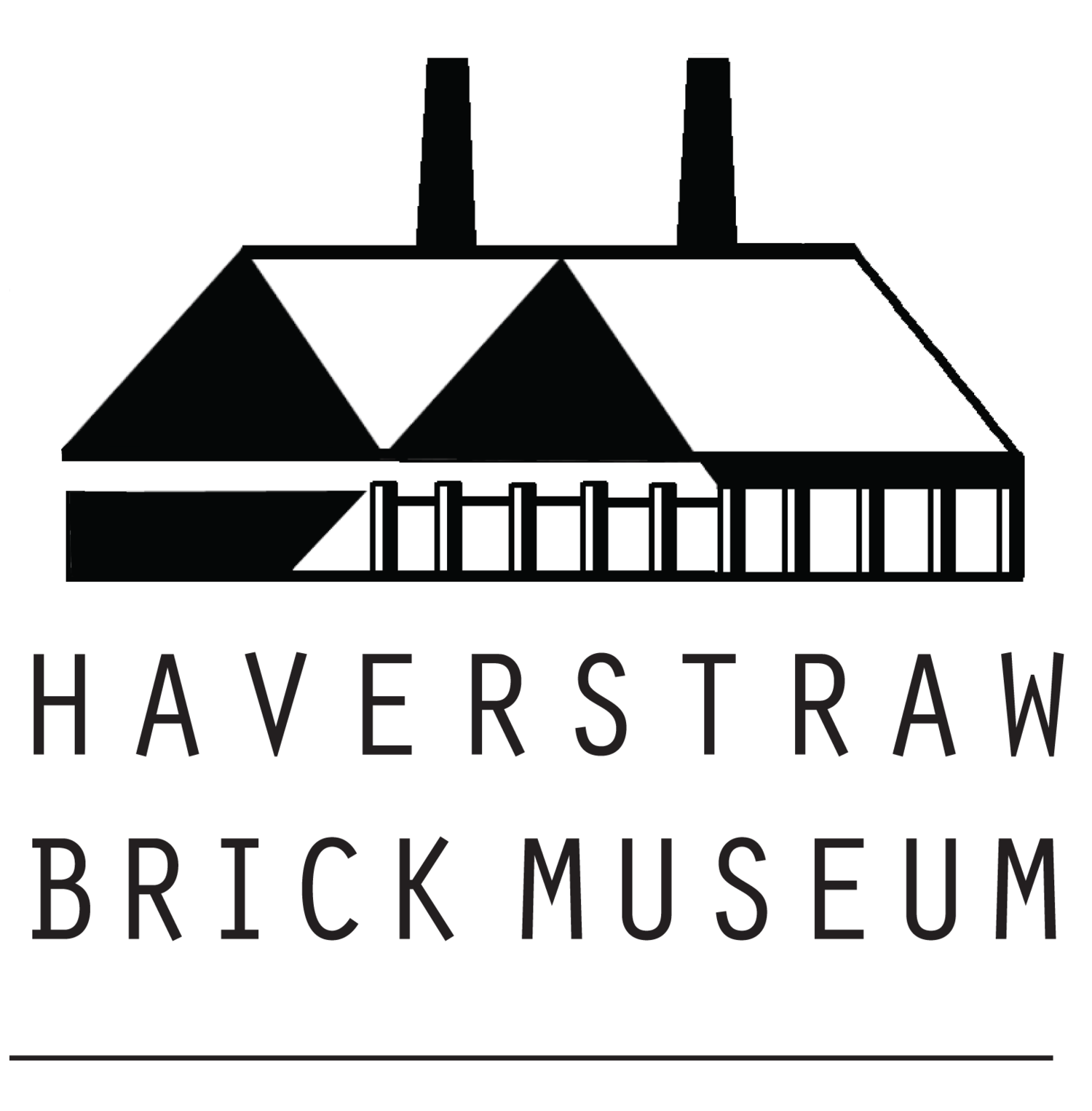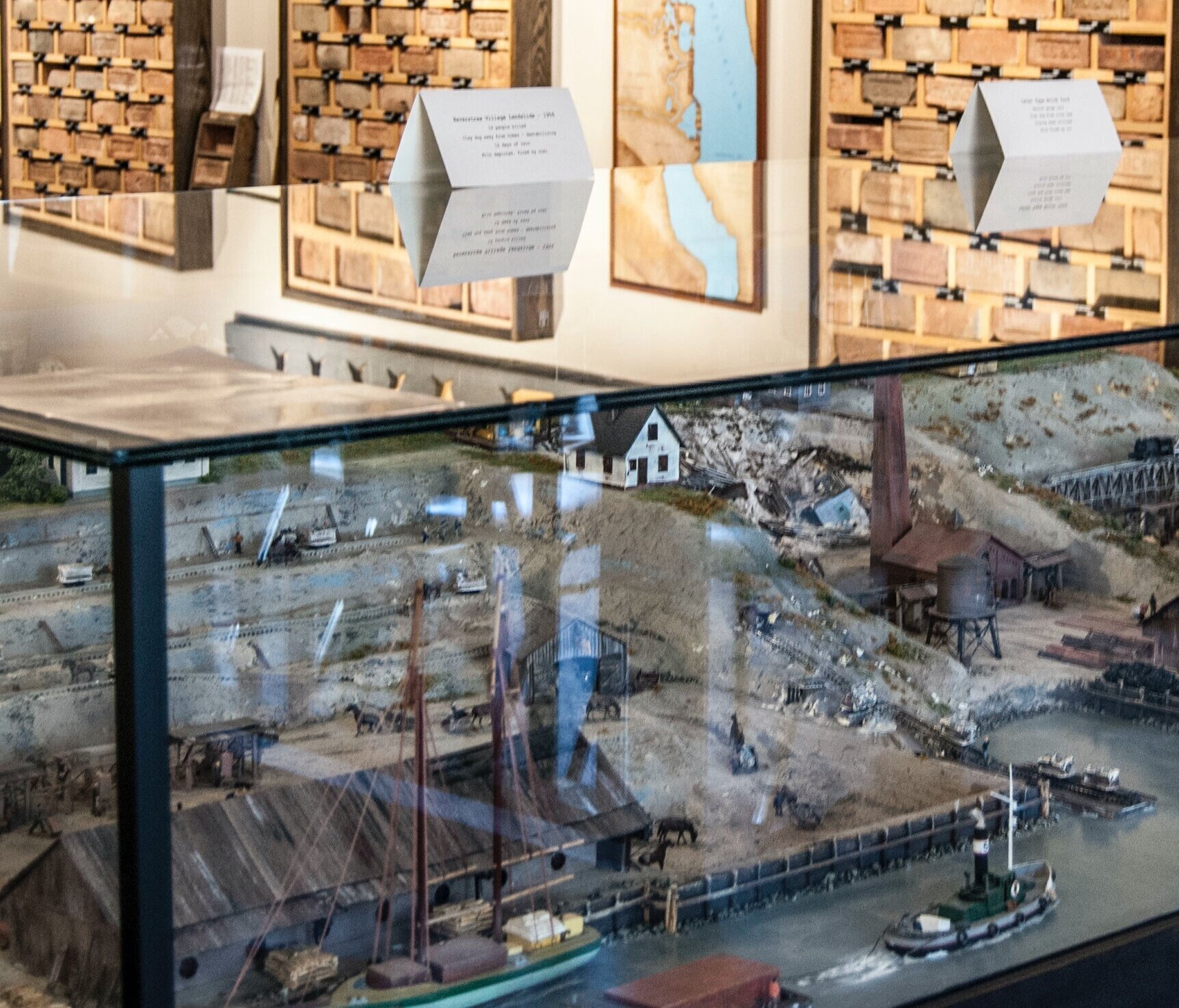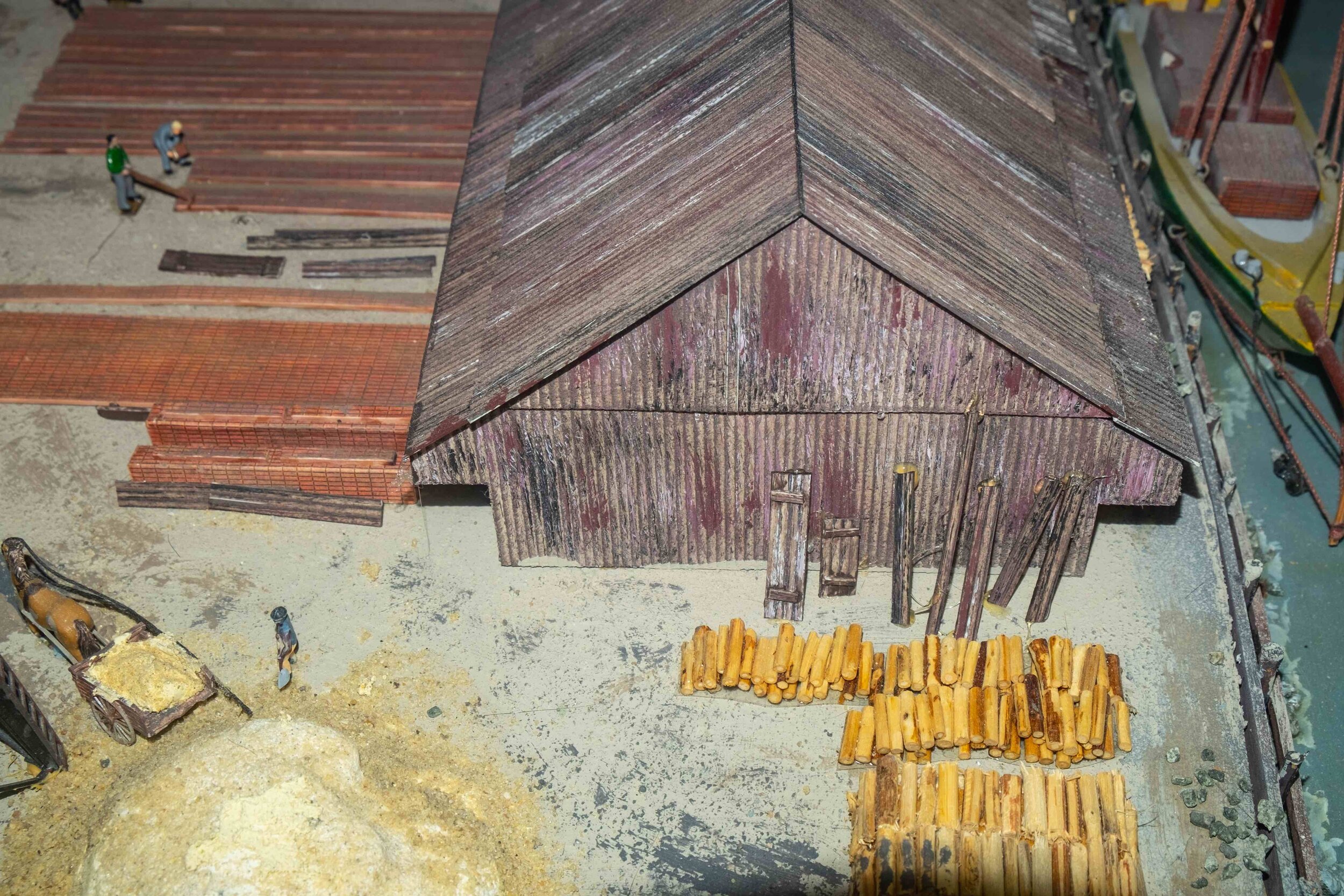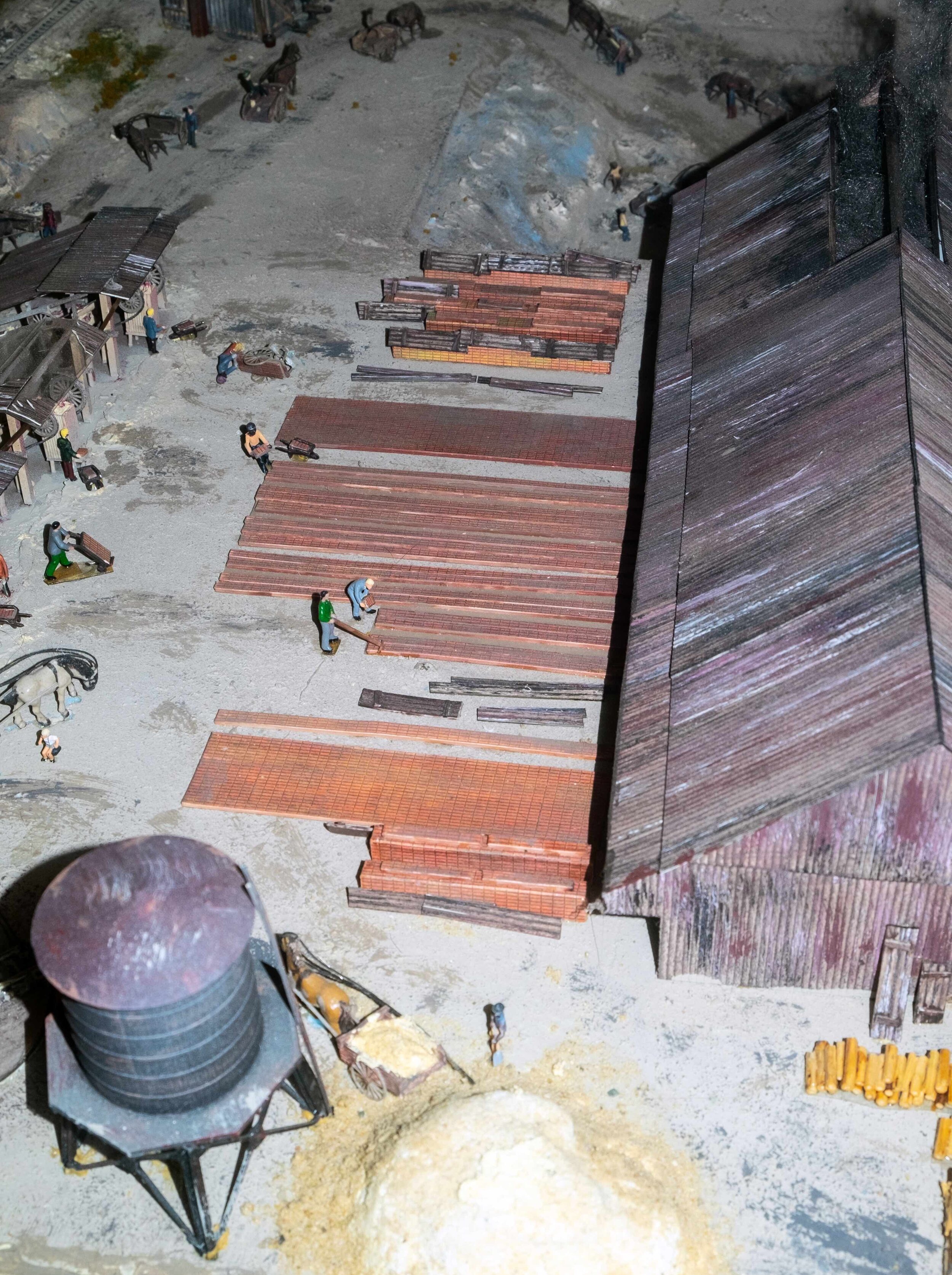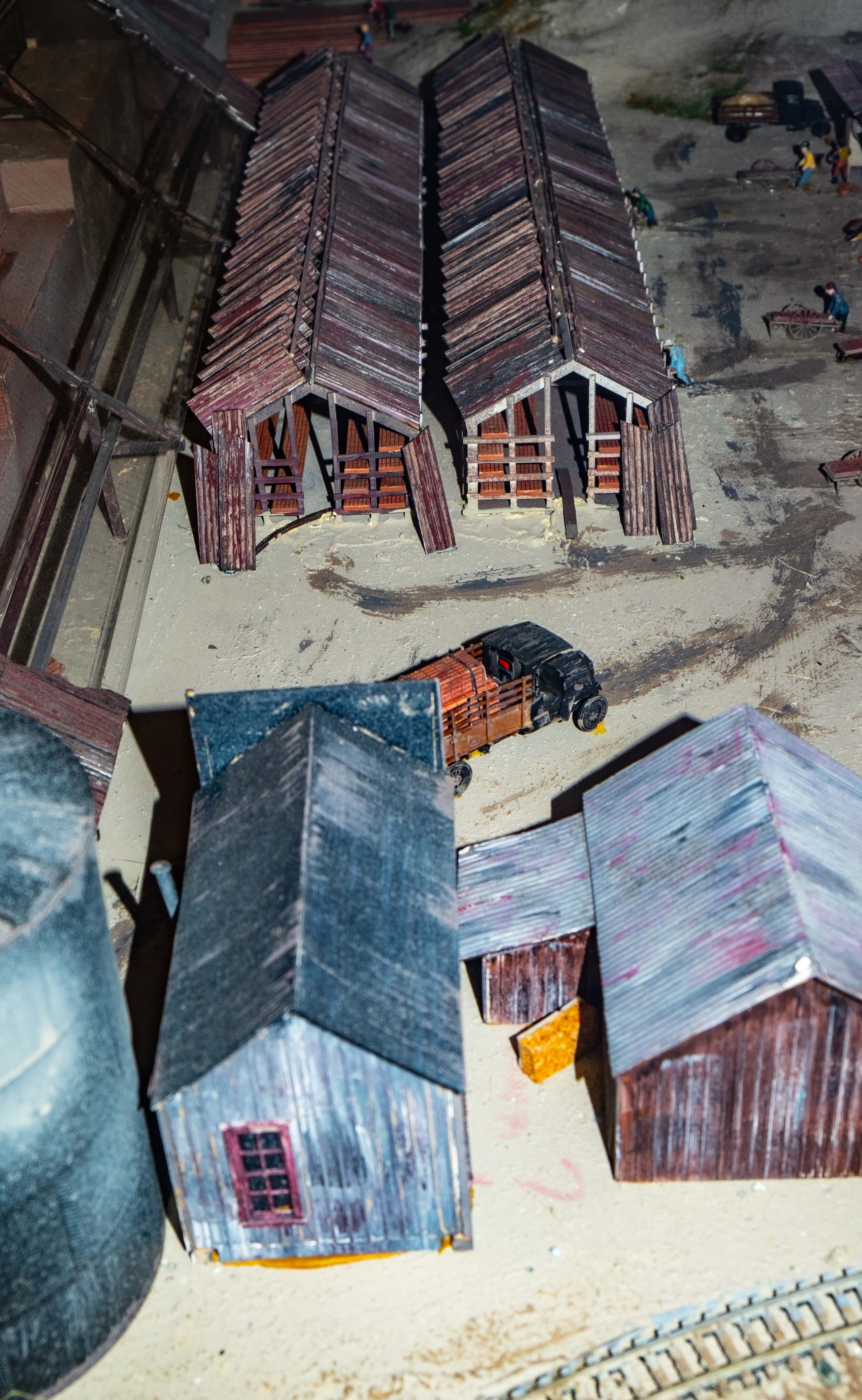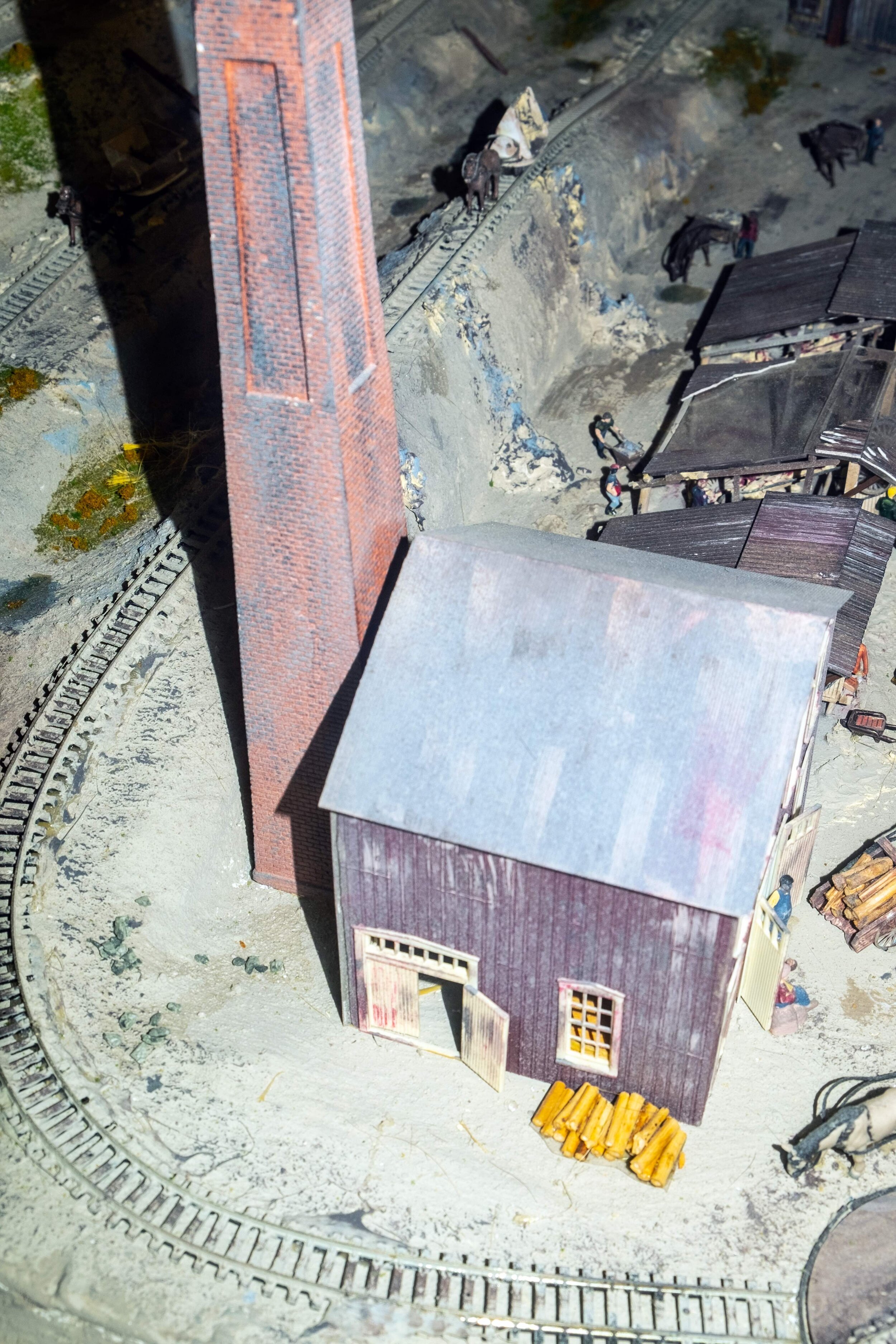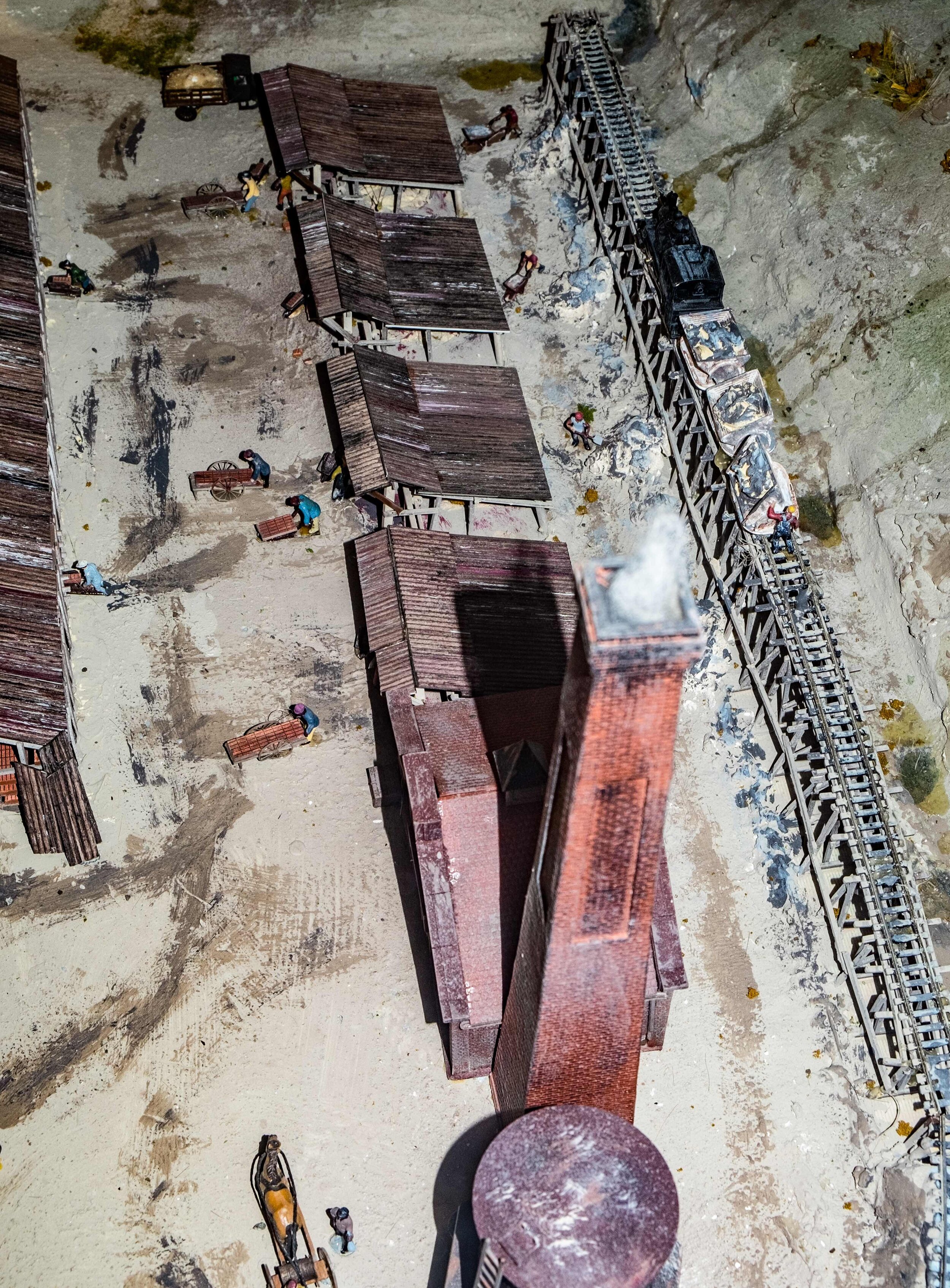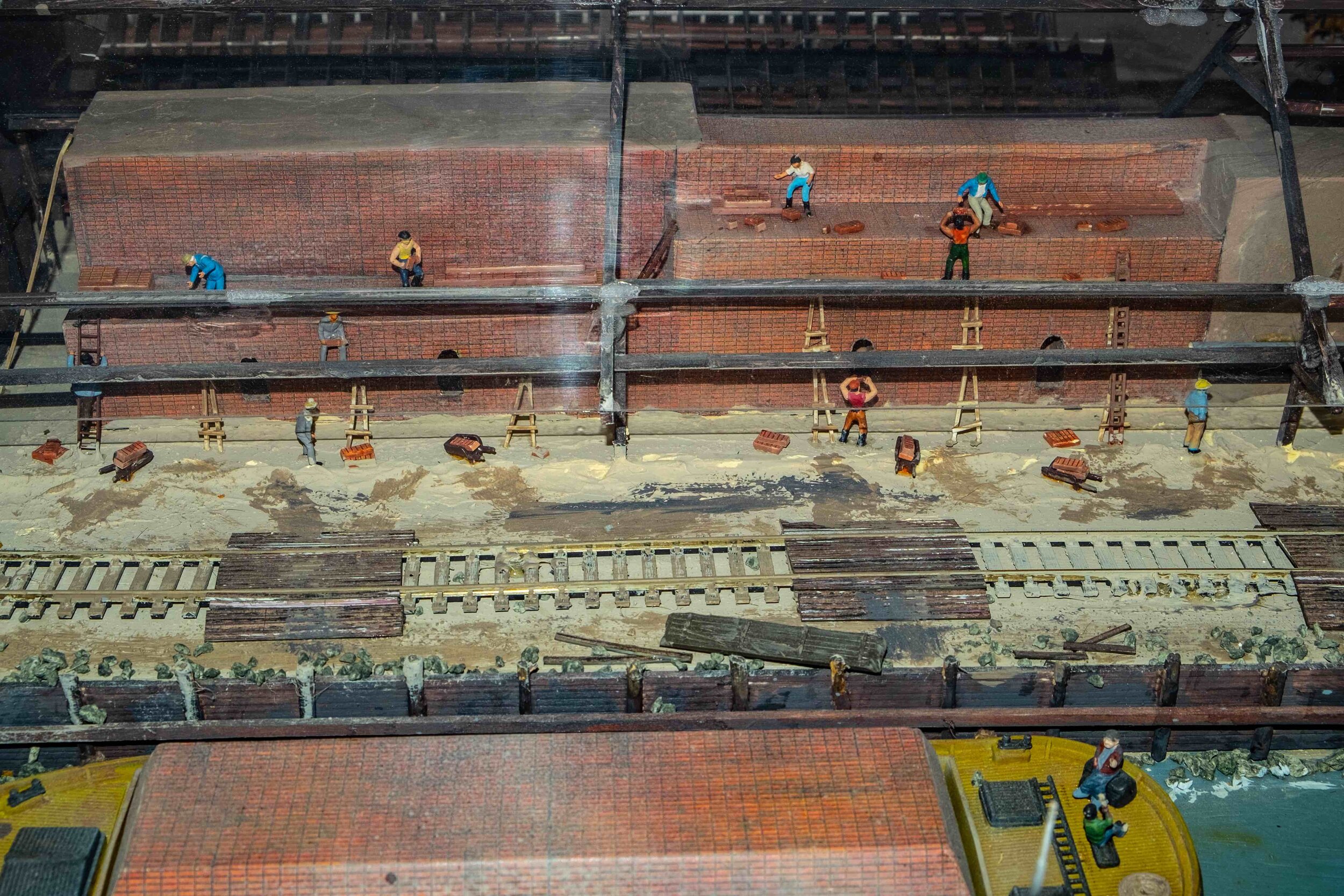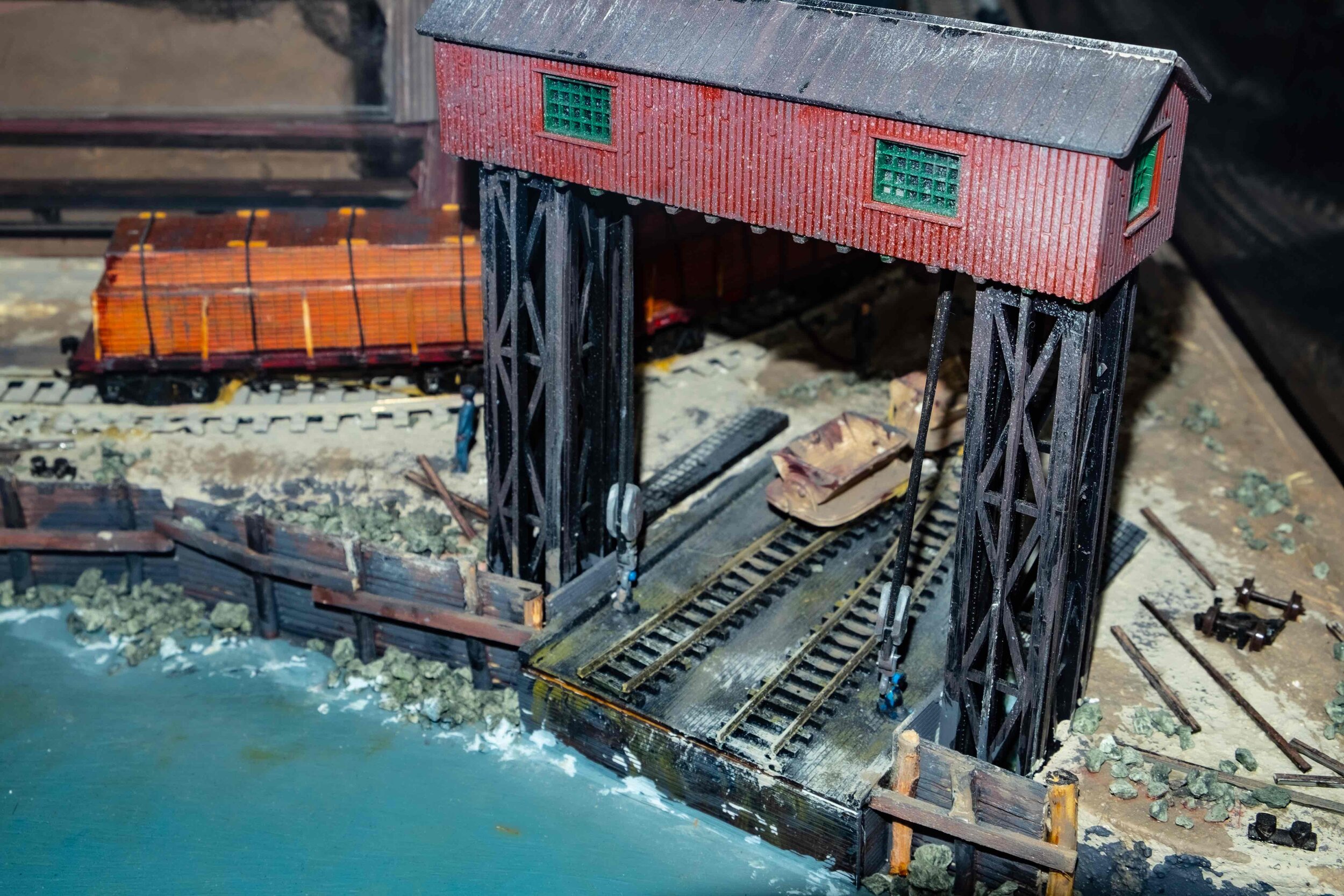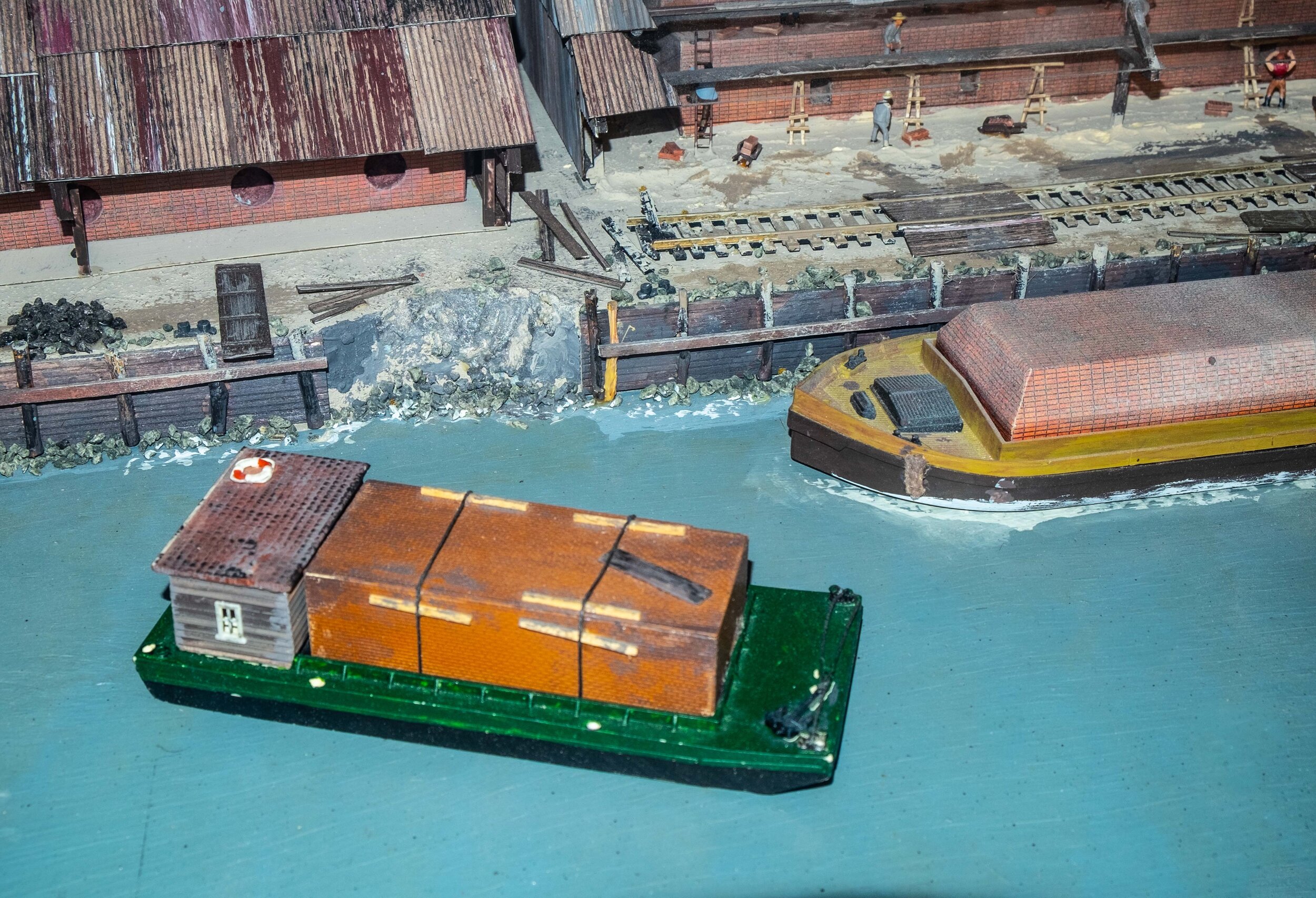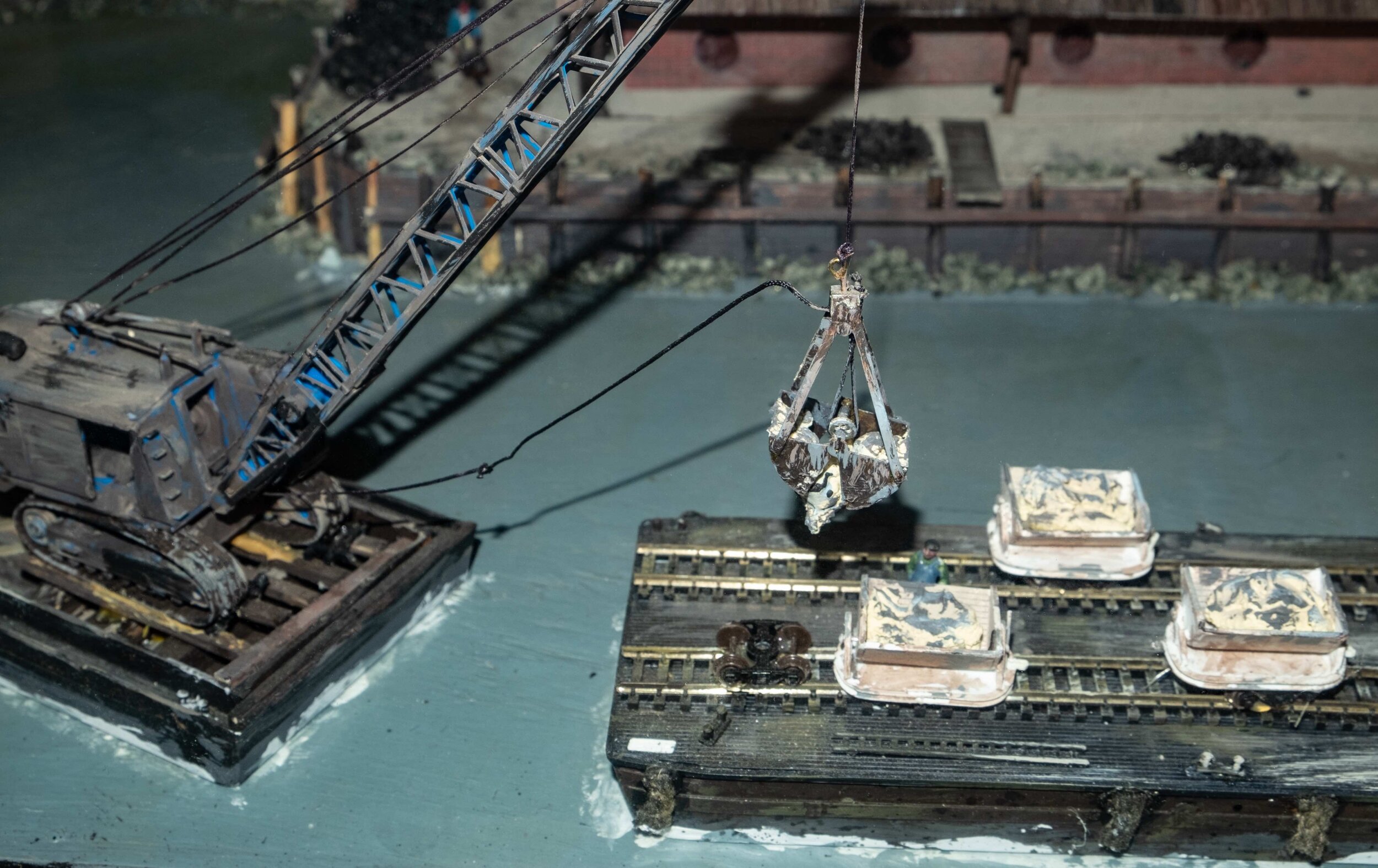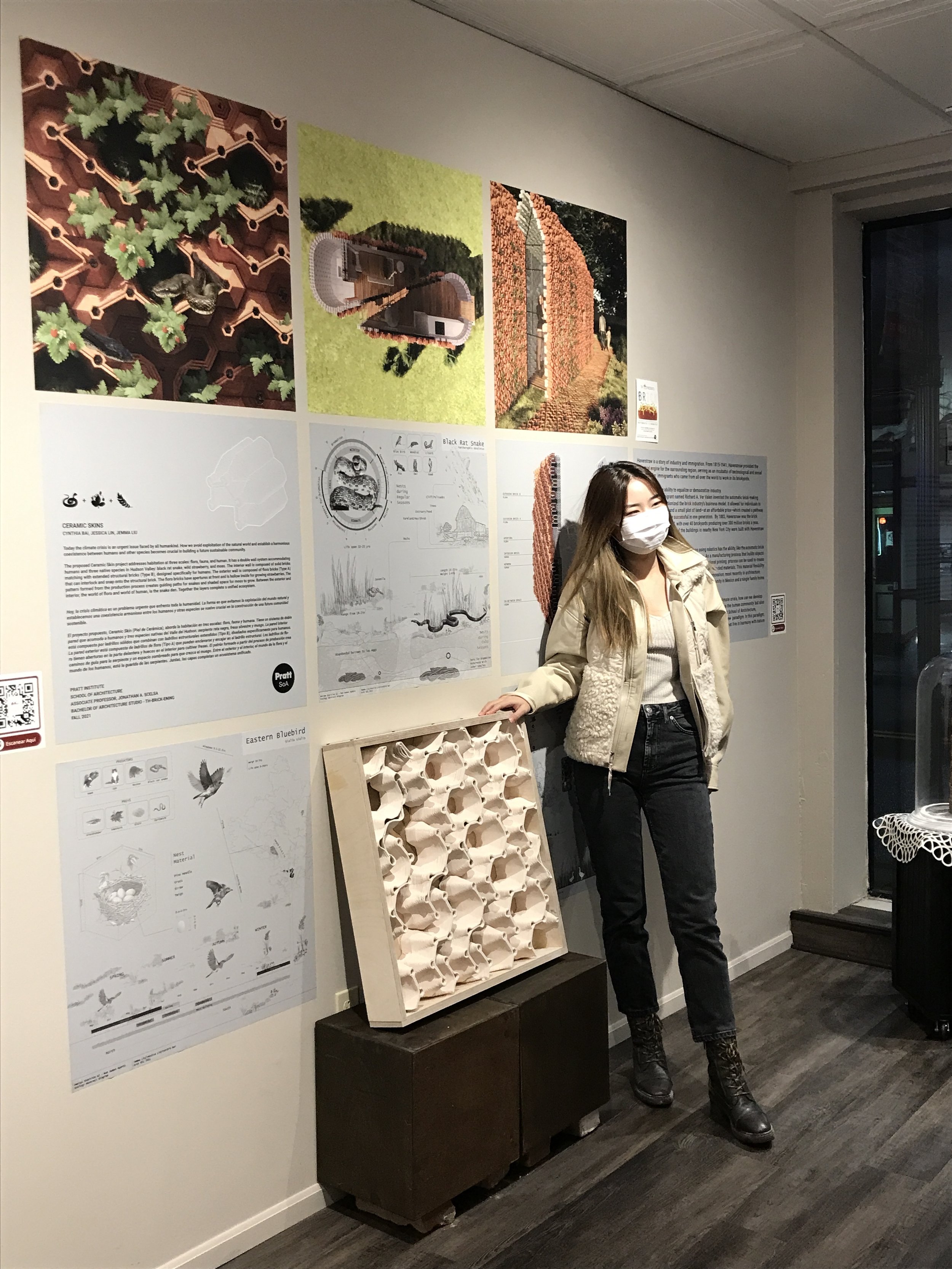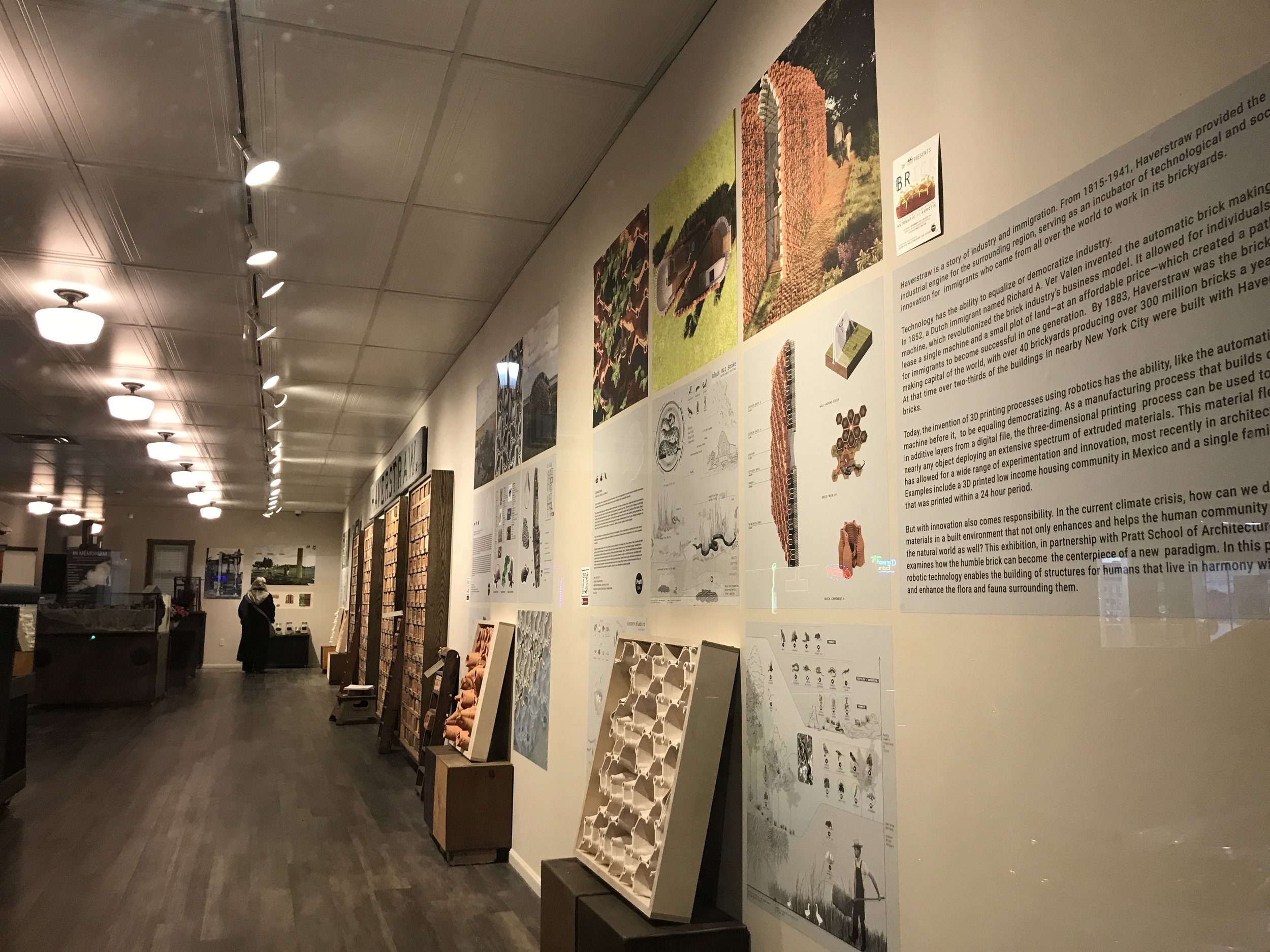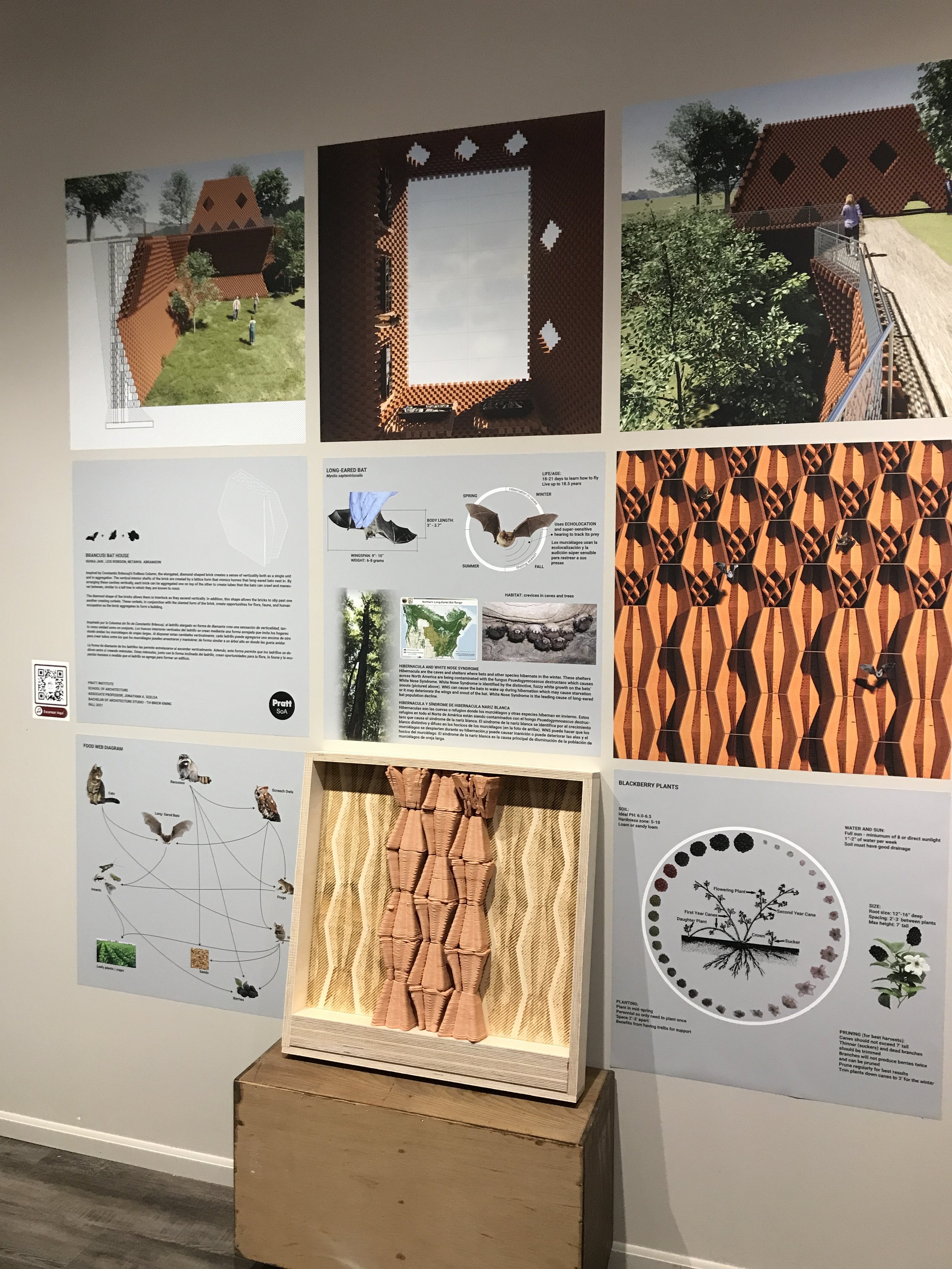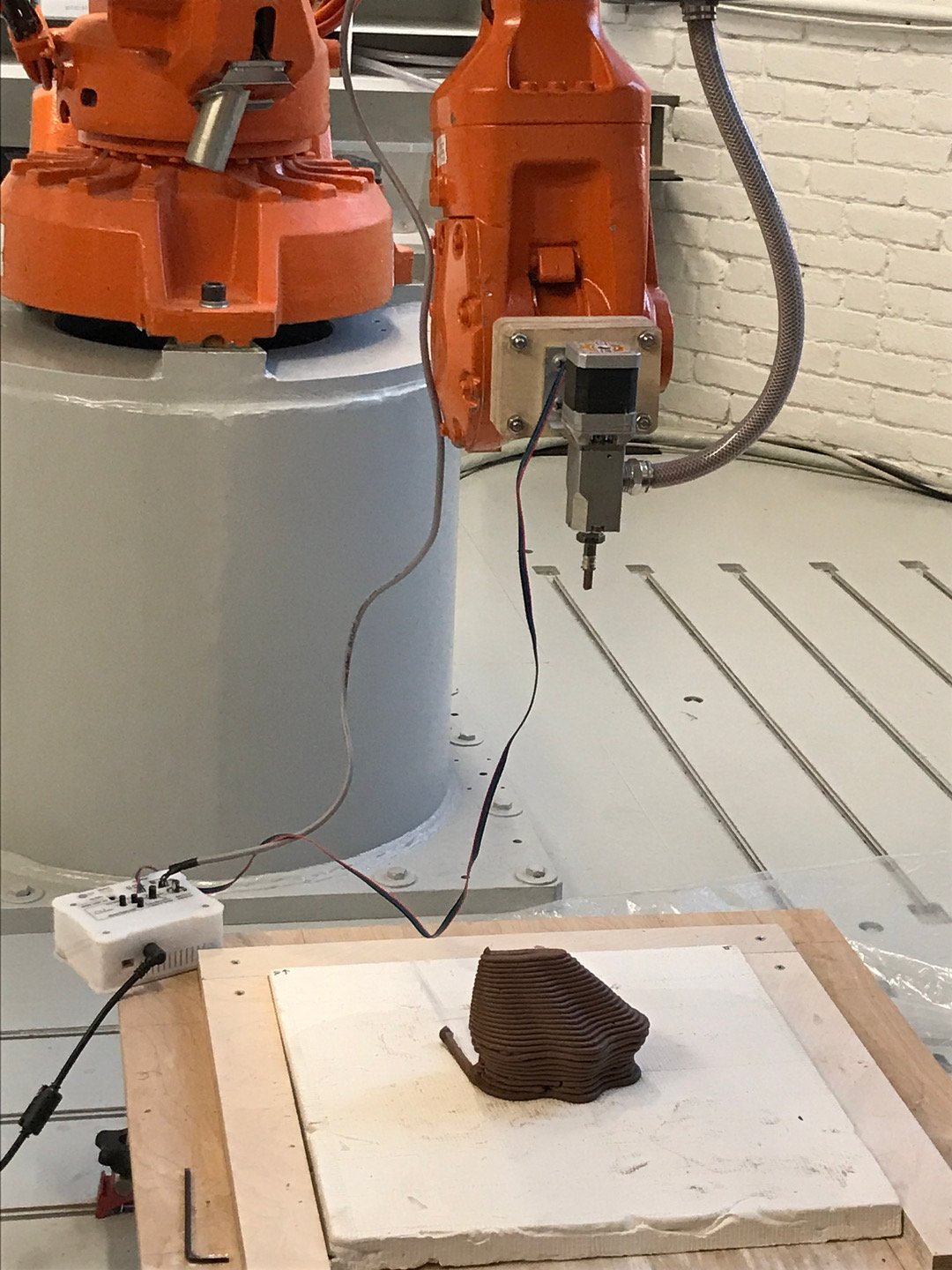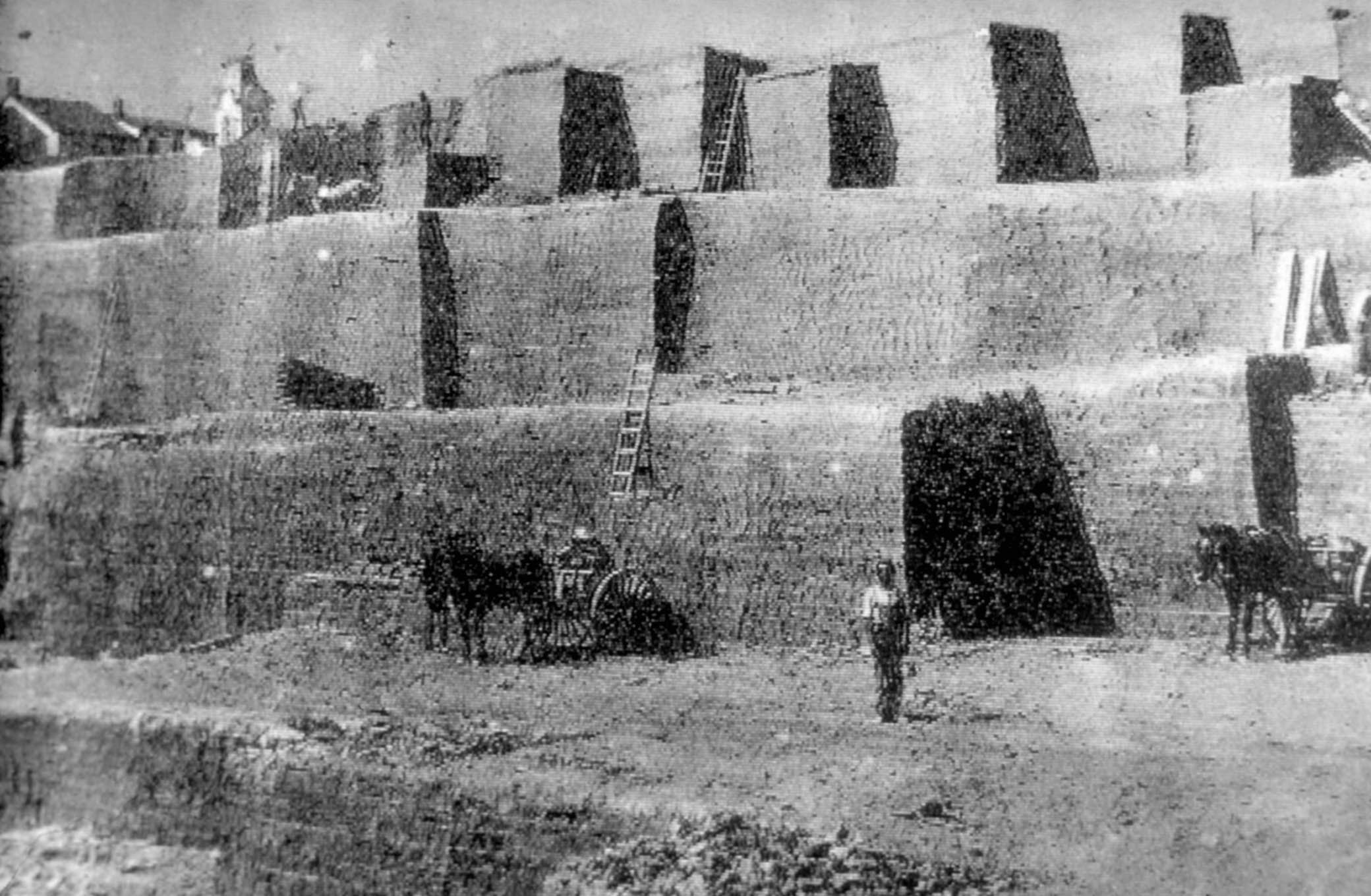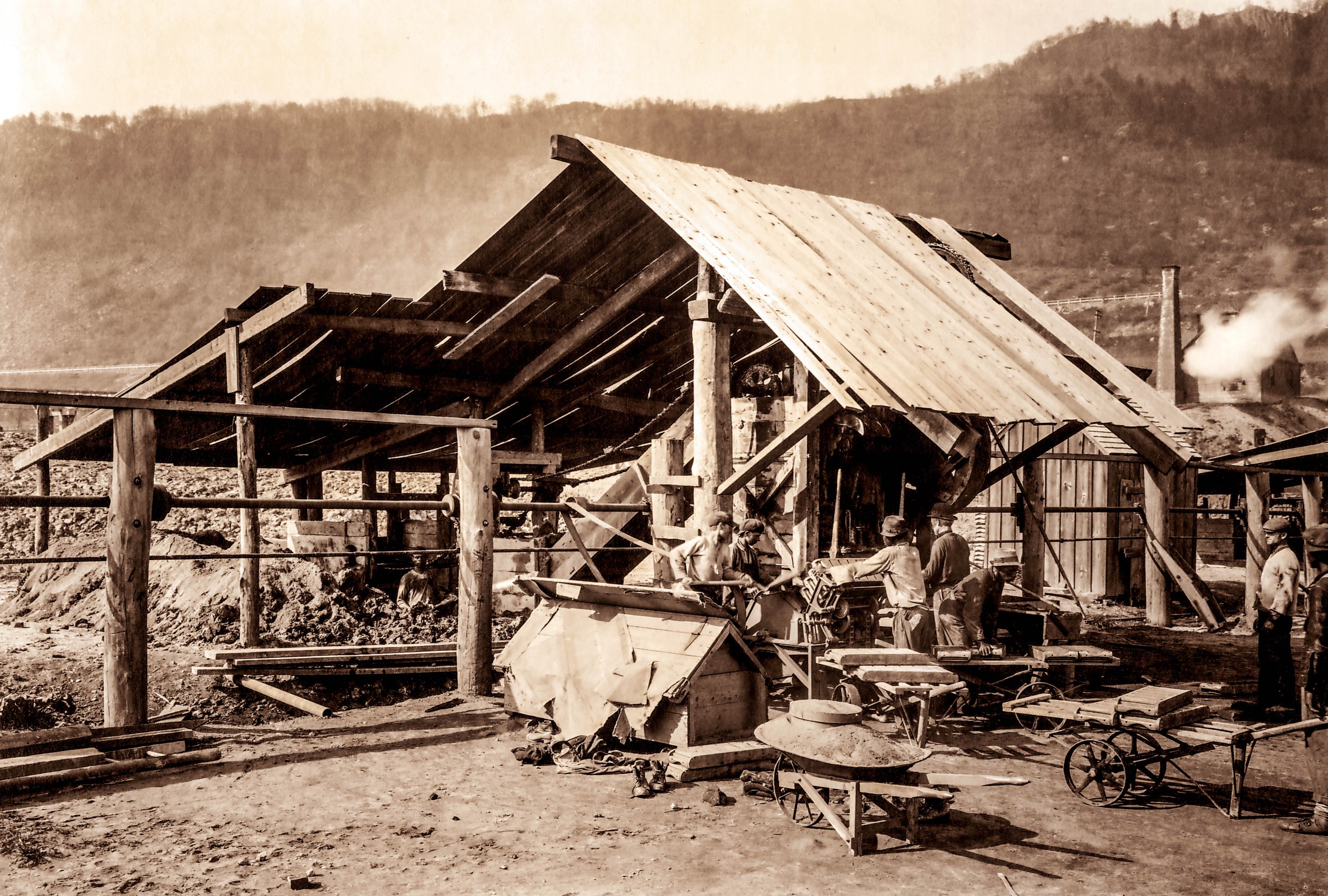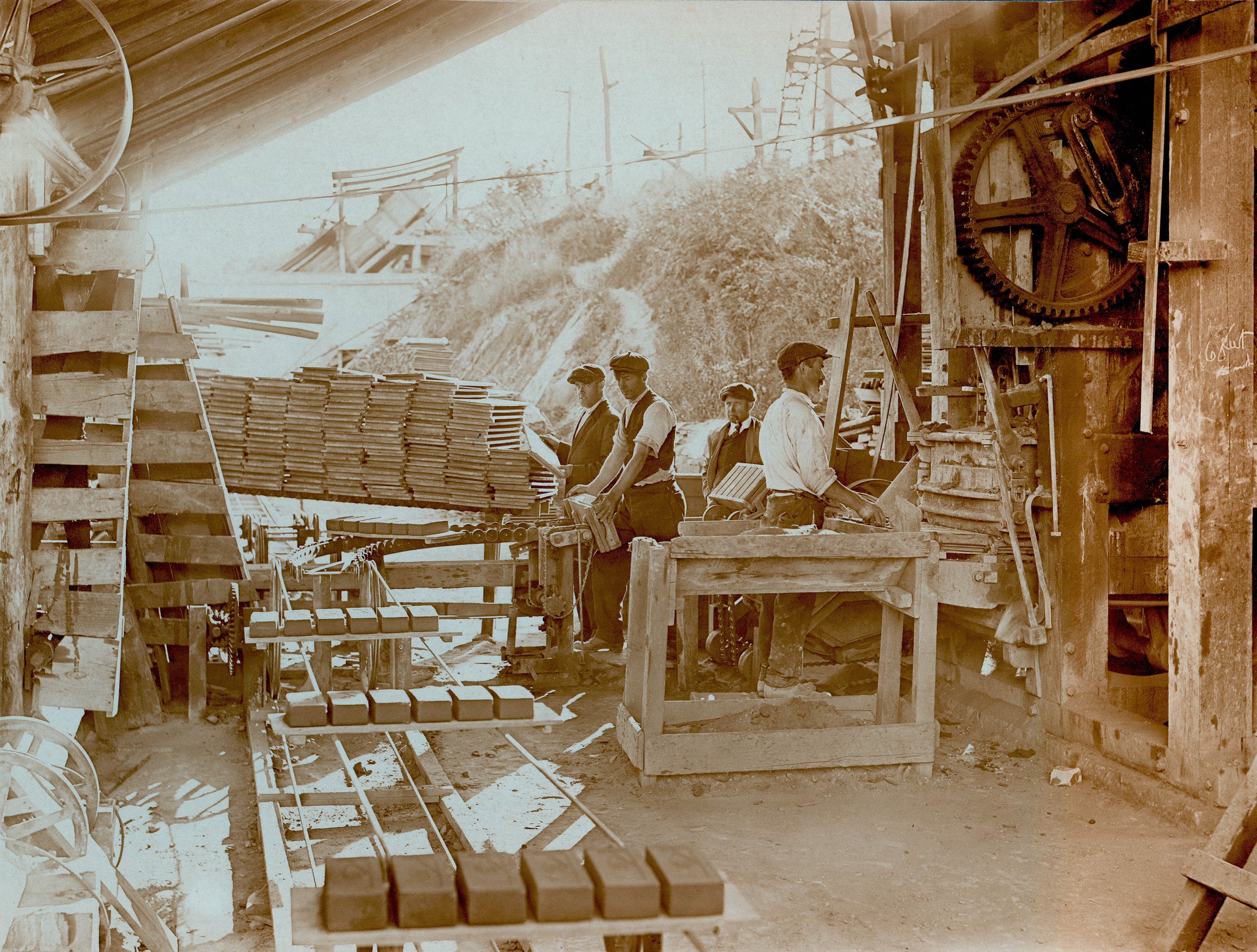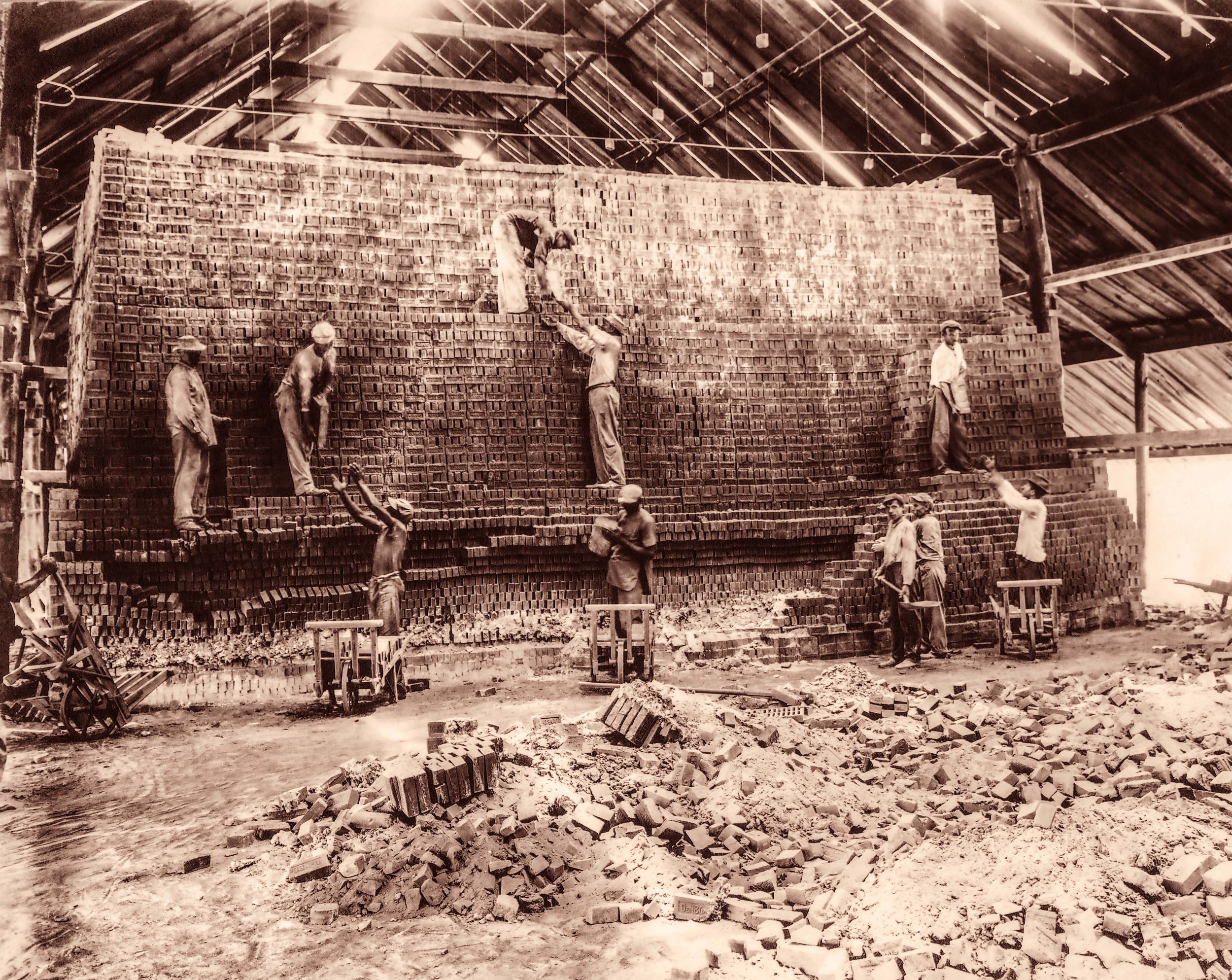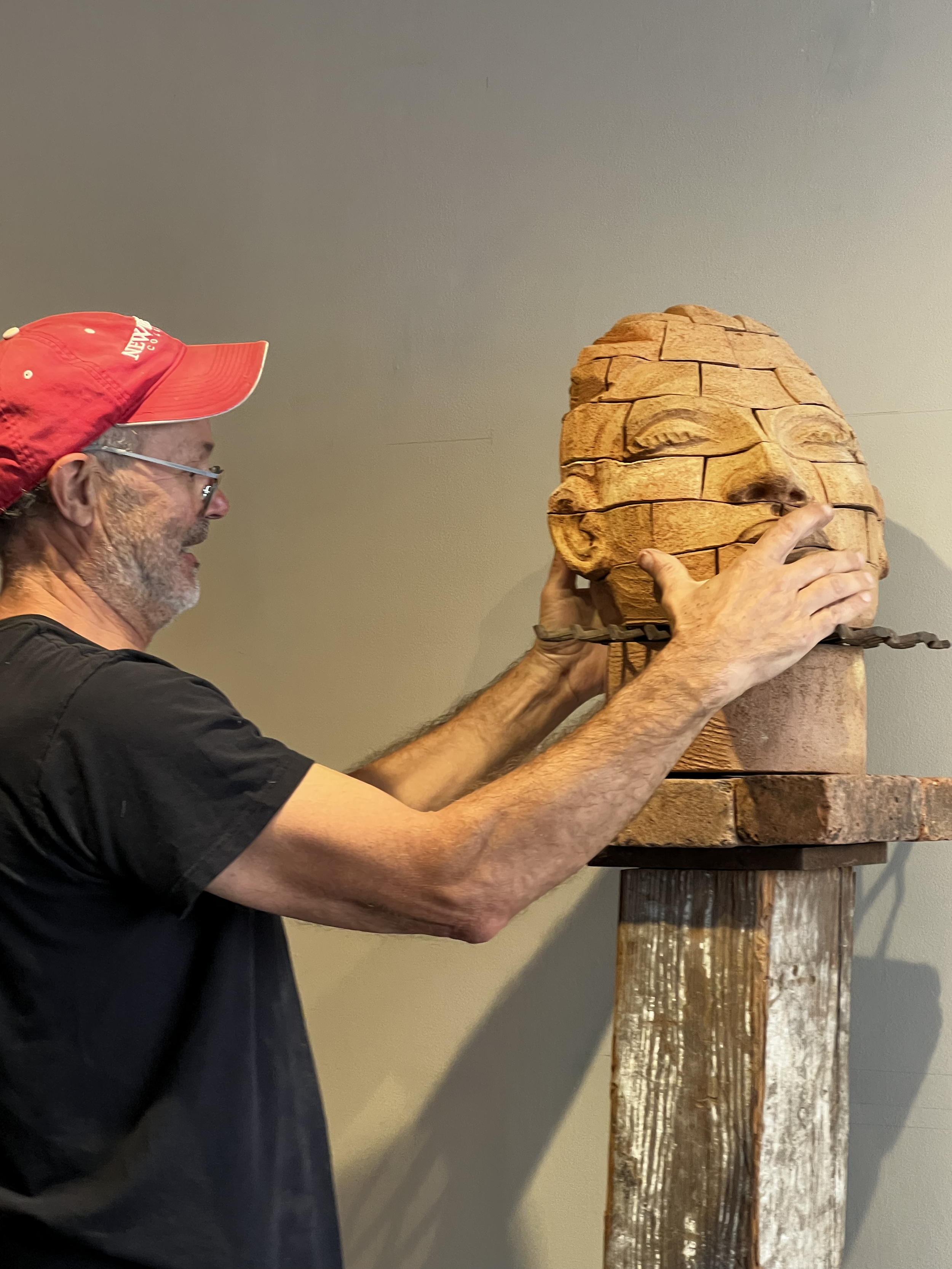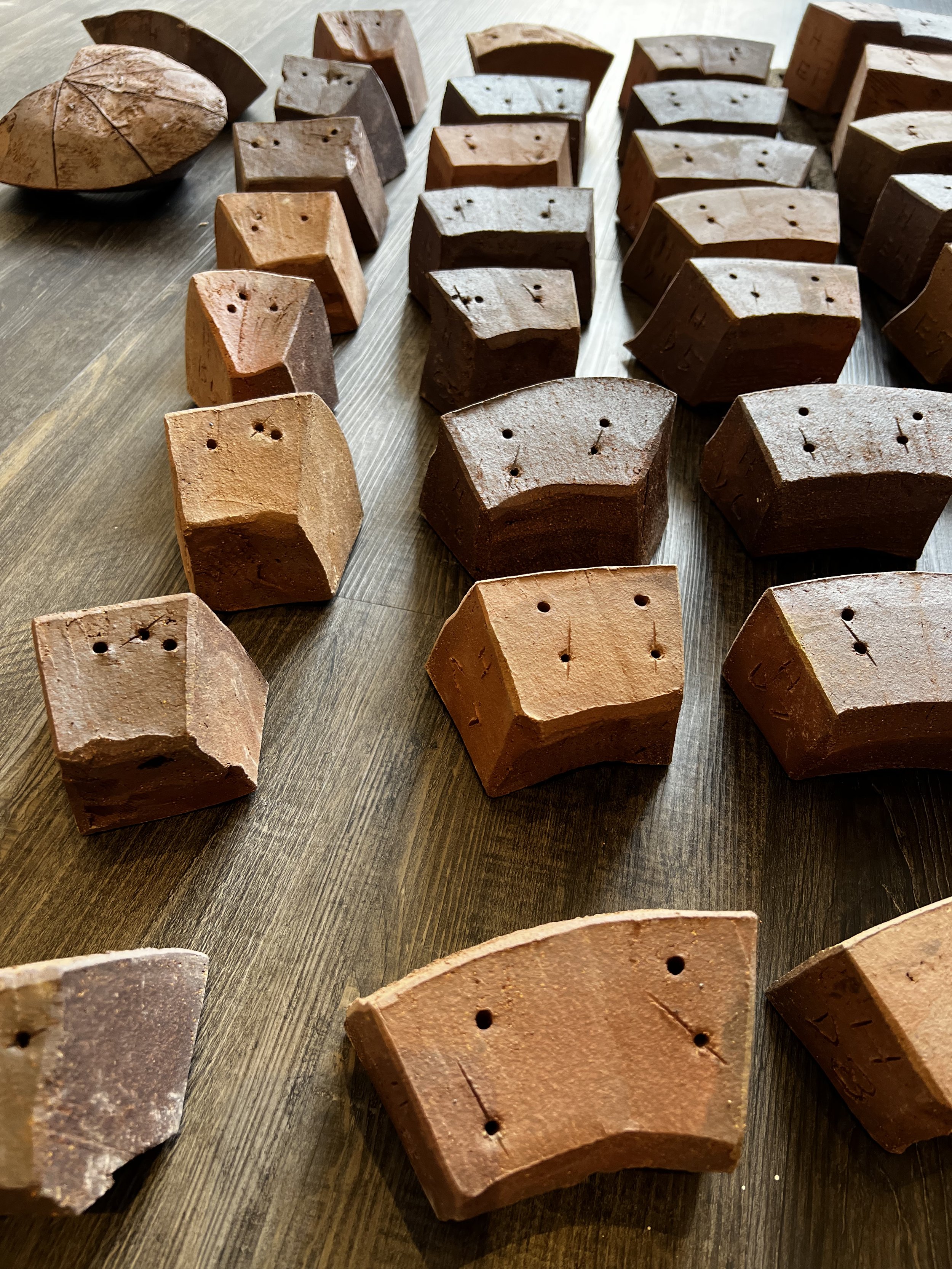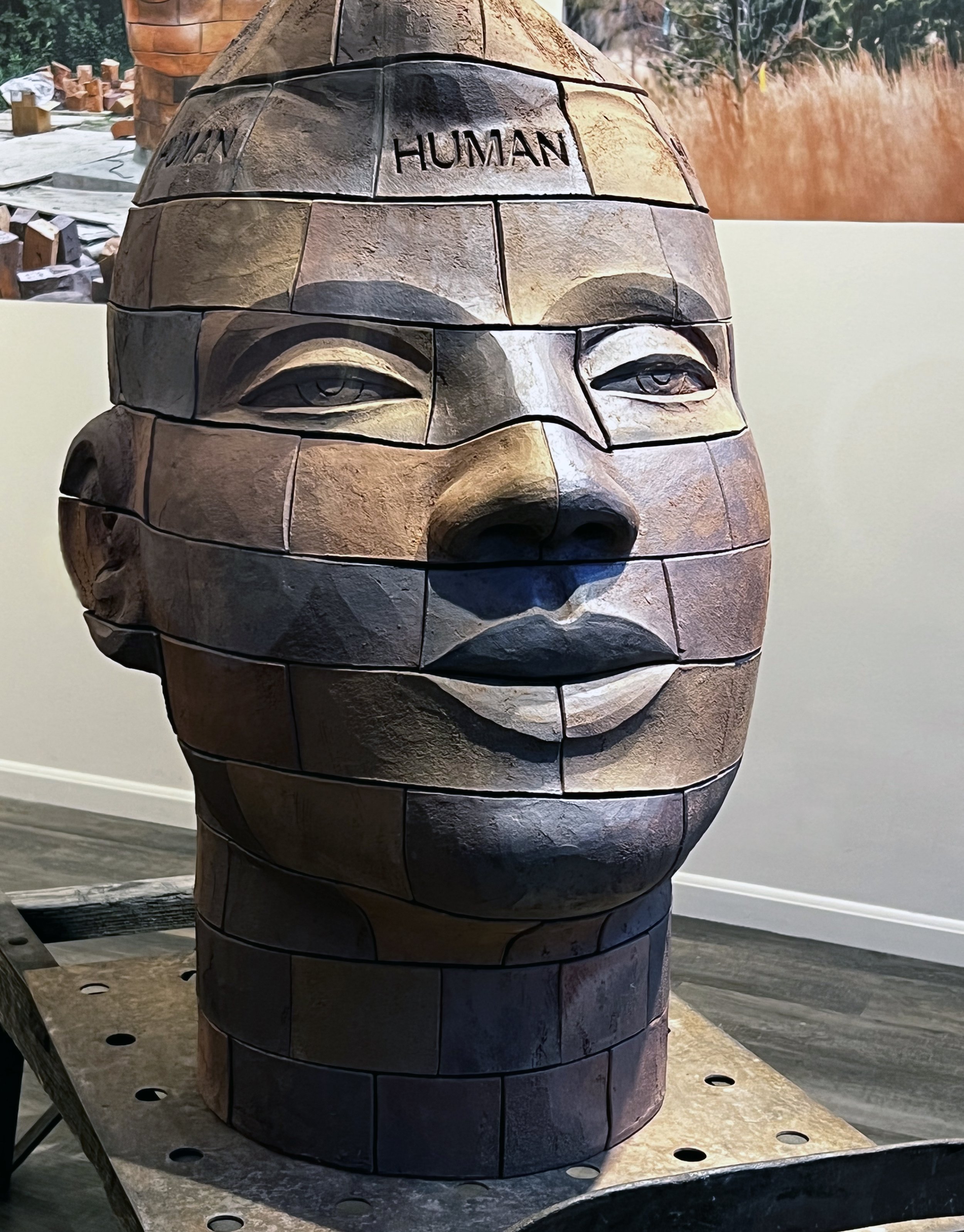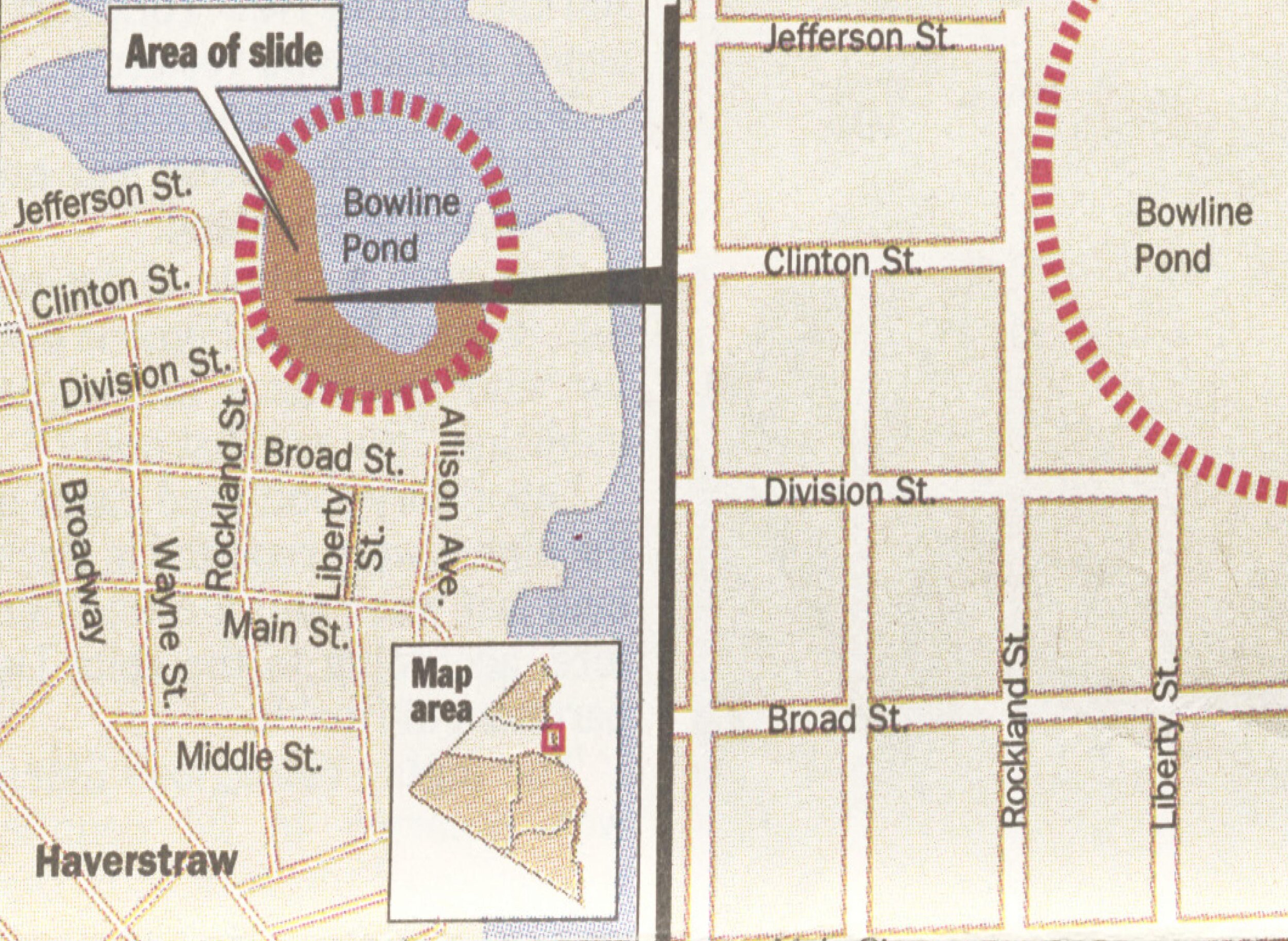EXHIBITIONS
The Haverstraw Brick Museum is pleased to host exhibitions by local artists, historians and architects related to the rich history of the brick industry and the Hudson River Valley Arts Community.
ON VIEW
The Museum has on permanent exhibition handmade dioramas about the brick industry. These beautiful detailed works of craftsmanship are a “must see” for adults and children of all ages who love American history and architecture.
PAST EXHIBITIONS
A LEARN THE PAST, DISCOVER THE FUTURE EXHIBITION
This exhibit was inspired by the traditional brick testing method of hitting two bricks together to see if they produce a clear, bell-tone ringing sound. If they did, the bricks were considered “good” and were shipped to New York; if not, they were discarded.
From 1815 to 1941, Haverstraw provided the industrial engine for the surrounding region, serving as an incubator of technological and social innovation for immigrants working in the brickyards. By 1883, Haverstraw was the brick-making capital of the world, with over 40 brickyards producing over 300 million bricks a year. Over two-thirds of the buildings in nearby New York City were built with Haverstraw bricks during this time.
These brick buildings still stand today. How do we preserve their materials for the future?
In an era when many natural resources are expected to run out within the next few hundred years, addressing how existing materials can be reused is crucial. The primary ingredients in brick production are Varve clay and sand, both natural resources found in river deposits. Because these deposits formed over thousands of years, they cannot be replaced and will be depleted within our lifetime.
These unsustainable practices stem from an inability to efficiently test materials to see if they can be reused in new construction. The solution to this would be to develop a testing method that can be used to test large quantities of material cost-effectively quickly.
This Exhibition seeks to identify the strength of bricks using sound to develop a more efficient non-destructive testing method for re-used bricks. This will result in a more accurate testing method that will not require destroying reusable materials to discover their structural capabilities.
Destiny with DIsaster
This MEMORIAL EXHIBITION is Dedicated to those who lost their lives in the Great Landslide of 1906
On January 8th, 1906, the earth on the clay bank in the Town of Haverstraw “gave way”, causing a catastrophic landslide that destroyed a large residential and commercial portion of the Village and the tragic loss of 19 lives.
Created by over-digging from the excavation of clay used in the manufacturing of bricks, which had pushed closer and closer to the edge of town, the slide began quickly in three stages. The first stage happened at 11:00 PM, sending hundreds of victims, clad in bedclothes, into the streets, some still barefoot. Fires, from the stoves that heated the homes and kerosene lamps which had been knocked over had set the buildings ablaze. Immediately, firefighters responded but faced enormous odds because of burst valves and water mains, natural gas explosions and hoses which froze because of extreme cold. Some thought the incident was over and headed back into their homes to retrieve their belongings from the collapsed buildings. The second Landslide occurred at 11:20 PM, catching people by surprise and leaving them to be trapped and killed by the third slide which started at 11:31 PM.
The tight knit community, long used to working together, organized rescue teams and search parties. The S.W Johnson Steam Fire Engine Company in Garnerville also responded and helped to restore the much needed water pressure. A snowstorm had coated building roofs which experts have said prevented the entire village from burning as fire embers blew in the wind.
THE BRICKYARDS
This permanent installation details the history of Haverstraw brickyards and the great brick industry that supported the Towns and Villages along the Hudson River from the 1600s to the 1940s.
Click on the picture above to enjoy our virtual exhibition featuring the work of local Haverstraw artist, James Tyler internationally renowned for his large brick heads.
The History of Rescue Hook & Ladder Company #1
Rescue Hook and Ladder Company, the first firefighting organization in the Village Of Haverstraw, was organized in the American Hotel on February 18th, 1854. The company, then known as The Union Fire Engine Company #1, initially had a hand drawn apparatus with which to fight fires. Rescue continued to operate as an independent fire company until April of 1859, when the Trustees of the Village of Haverstraw accepted the company into the Haverstraw Fire Department, joining what is now, the General Warren Emergency Company #2.
Come see this fascinating exhibition at the Haverstraw Brick Museum.
